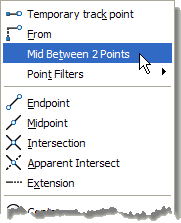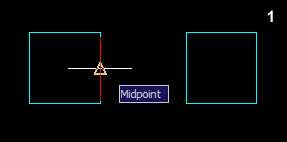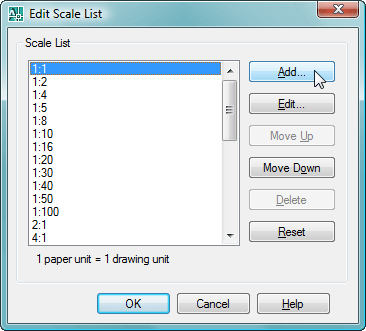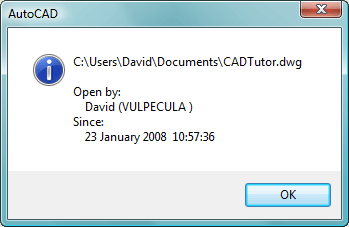AutoCAD Tips & Tricks
Today's Tip
Using Imprint to sub-divide faces
 The Imprint command () gives the first impression of nothing more than adding graffiti to solids. Upon closer investigation, however, we find that it actually modifies the face on which it is placed, effectively sub-dividing it. Sub-divided faces can then be extruded using the Extrude faces command ().
The Imprint command () gives the first impression of nothing more than adding graffiti to solids. Upon closer investigation, however, we find that it actually modifies the face on which it is placed, effectively sub-dividing it. Sub-divided faces can then be extruded using the Extrude faces command ().
Procedure
- Create a box.
- Draw a line on one of the faces.
- Imprint that line on the solid.
- Use Extrude faces to extrude the sub-divided face.
To generate this modified part with Boolean operations would not be difficult but, as we all know, speed and accuracy are the name of the game. The procedure describe above can be auto-executed with the command macro:
^C^C_line;\\;_solidedit;b;i;\last;y;;;f;E;\;\\;;
The UI could benefit from some advanced programming, but if one pays attention to the Command Prompts, it's not so bad.
Note: This tip relates to versions of AutoCAD before 2007. Although the technique works with 2007 and above, the same operation can be achieved more easily using the Presspull tool.
Yesterday's Tip
Take control of QNEW
Have you ever wanted to change your QNEW command or your "New" button to open a certain .dwt file? Here's how:
Go to the options menu and select the tab.
Go down to .
Select .
Select the .dwt file you want to use.
Now when you open AutoCAD or hit the "New" button this .dwt will load every time.
Saturday's Tip
Shift + Right-click menu
 Object snaps are really inportant in AutoCAD and in addition to the running object snaps, many AutoCAD users have the Object Snap toolbar permanently docked on their screen. However, as screen space is often at a premium, you might like to consider accessing the object snaps from the Shift + Right-click menu. If you didn't know about this, you'll find that it's even better than the Object Snap toolbar because it takes up no space and it contains all the object snaps including "Mid Between 2 Points" and the Point Filters.
Object snaps are really inportant in AutoCAD and in addition to the running object snaps, many AutoCAD users have the Object Snap toolbar permanently docked on their screen. However, as screen space is often at a premium, you might like to consider accessing the object snaps from the Shift + Right-click menu. If you didn't know about this, you'll find that it's even better than the Object Snap toolbar because it takes up no space and it contains all the object snaps including "Mid Between 2 Points" and the Point Filters.
Friday's Tip
Mid Between 2 Points (m2p)
 Sometimes you might want to find a point midway between two other points. In the past, you might have drawn a line between these two points and then used "Snap to Midpoint" but this requires the drawing of a construction line and isn't very efficient.
Sometimes you might want to find a point midway between two other points. In the past, you might have drawn a line between these two points and then used "Snap to Midpoint" but this requires the drawing of a construction line and isn't very efficient.
Enter the m2p object snap. This will find the midpoint between any two picked points without the need for a construction line.
How it works: Say you want to draw a circle midway between two squares, start the circle command and then enter "m2p" when prompted to specify the center point. Now just follow the prompts.
Command: circle
Specify center point for circle or [3P/2P/Ttr (tan tan
radius)]: m2p
First point of mid: (pick first point)
Second point of mid: (pick second point)
Specify radius of circle or [Diameter] <20.000>: (pick to complete circle)
Thursday's Tip
Add additional "standard scales"

To create additional "standard scales" in AutoCAD, type SCALELISTEDIT. You will then see the Edit Scale List dialog, shown on the right.
Click on the Add… button. In the Add scale dialog, enter the name of the scale, for example "1:1250", this is the name that will appear in the list. Then enter the Paper units and Drawing units as desired.
Note: "Drawing units" refers to the modelspace units.
Wednesday's Tip
Who is using that file?
 If you are unable to open a drawing for editing (read-only) because it is in use, and want to find out who has it open, start a new drawing, or go to a drawing you have open and type WHOHAS at the command line. Browse to the drawing file using the file dialog box and double-click the filename (or select the file and click the Open button). A small message box will appear, showing who is using the file, the name of their PC and when it was opened.
If you are unable to open a drawing for editing (read-only) because it is in use, and want to find out who has it open, start a new drawing, or go to a drawing you have open and type WHOHAS at the command line. Browse to the drawing file using the file dialog box and double-click the filename (or select the file and click the Open button). A small message box will appear, showing who is using the file, the name of their PC and when it was opened.
Tuesday's Tip
Do you want to turn it into one? <Y>
When using PEDIT and selecting an object which is not a polyline you will get a message asking if you want to turn it into a polyline. This can be quite annoying if you're having to create closed polylines from a bunch of lines. To stop getting this message, type PEDITACCEPT and press Enter. Then type 1 and press Enter. This will automatically answer "yes" to the question in future.
Tutorials of the Moment
The most recently viewed tutorials
The UCS Icon |
Edges
|
|
Last visited: less than one minute ago |
Last visited: less than one minute ago |
|
AutoCAD 2010: The 3D Primitives
|
User Co-ordinate Systems
|
|
Last visited: 1 minute ago |
Last visited: 1 minute ago |
Local Navigation
Tutorials
Helping you to learn more of the skills you need, for free.
Featured Tutorial:
CADTutor tutorials are comprehensive lessons, designed to give you a deeper understanding.
Total tutorials: 108
Sponsored Links





